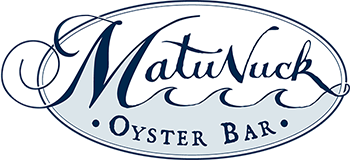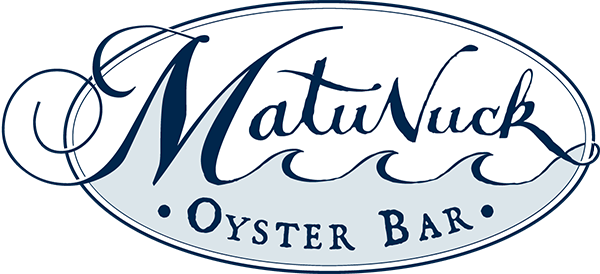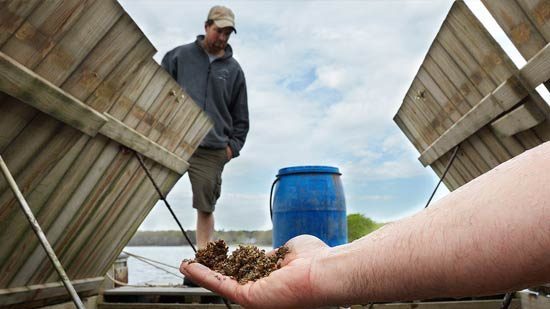
Raising Objections: Hurdles for Rhode Island Aquaculture
R.I. SHELLFISH FARMS FACE INCREASING OPPOSITION
by RudiHempe
photographs by Acacia Johnson
Perry Raso’s Matunuck Oyster Bar, on the waterfront of SouthKingstown’s Potter Pond, is jammed in the summer, and does respectable business year-round, even on a snowy day in January. Raso’s restaurant, however, is only the most visible part of his Matunuck Oyster Farm operation, and his success has not come without challenges in a state that boasts myriad regulatory hurdles amid increasing opposition to the aquaculture industry.

Fishermen collect oysters from the 7-acre farm serving Matunuck Oyster Bar in Potter Pond
Raso’s oyster venture, with well over 100 employees, is considered by many of his peers a sign that aquaculture is flourishing in Rhode Island. But while his diners savor the fresh delectables on their plates, most have no idea what is involved in starting and maintaining an oyster farm in Rhode Island.
Raso grew up on the shore, and at age 12 was digging and diving for littlenecks in the salty water of Potter Pond. His oyster operation got its start when he was an aquaculture and fisheries student at the University of Rhode Island, where he graduated in 2002.
“People who live on a body of water have a sense of ownership.”
He obtained two “commercial viability” aquaculture licenses for two small areas in Point Judith Pond. These licenses, issued by the R.I. Coastal Resources Management Council (CRMC), allow applicants to setup trial operations. That initial venture did not work out—the two 50-by-50 foot areas were in deepwater and algae growth on the bagged oysters made it almost impossible for him to harvest them using the small gear-less boat he had at the time. He then decided to shoot for his favorite fishing spot—PotterPond—and in 2002 filed for a preliminary determination, the first step in the permitting process, to construct an oyster farm there in three shallow acres. “I never thought in a million years that I was going to get accepted,” says Raso, noting that nearby residents did not even like to see divers in the ponds, taking what they perceived to be food from their back yards.
“People who live on a body of water have a sense of ownership,” he says, recalling the days of his youth when he drove his boat over an oyster farm and he himself questioned how anyone can own a part of the ocean?
To his surprise, no one objected to his farm proposal. The same was true a few years later when he applied for an expansion of his farm to double its size. However, as aquaculture has grown in the state, so, too, has opposition, says David Beutel, the CRMC‘S state aquaculture coordinator.
“This is a busy year. There are objectors all over the place,”says Beutel, himself a former fin fisherman. By objectors, he explains, he is referring to nearby residents, recreational-use proponents, commercial interests, and at times regulatory agencies.
It is to Beutel’s desk inWakefield where all the applications for new aquaculture farms, farm expansions, and farm ownership transfers are brought. The first step is the “preliminary determination” process, which costs applicants a mere $25. That, however, triggers a barrage of paper work and involves a slew of agencies and special interests that have the opportunity to comment on the proposal.
Applicants “come in with an idea what they want to grow, how they want to grow it, and have a vague idea of where they want to grow it,” says Beutel. “We do not tell people where to do it but will work with people, trying to determine what the level of conflict will be in the sites that they are choosing, and we do recommend to them that they try to minimize that. Not everyone does that.”
“I even had someone tell me they don’t like that spot for an oyster farm because their dog swims there—it goes to that level of absurdity.”
If the applicant wishes to proceed, Beutel and the CRMC staff send notifications to local fishing associations, both recreational and commercial, notify the town where the farm is to be located, and also alert a host of state and federal agencies. Then a preliminary determination public meeting is scheduled. “The intent is to get any immediate issues out on the table. For example, the applicant might not know that the site he wants overlaps a mooring field or that it is heavily used by bullrakers. So we try to work with those groups to relocate the proposal,” Beutel says.
Beutel hosts the meeting, describes the regulatory process, explains the proposal (or has the applicant do so) and in the process, “invariably somebody will care about something.” For example, a neighborhood association may point out that their members swim in the area proposed for the farm. “I even had someone tell me they don’t like that spot for an oyster farm because their dog swims there—it goes to that level of absurdity.”
After the session, Beutel composes a preliminary determination report based on the information received. He also conducts a shellfish density survey at the site to make sure the area is not already productive for shellfish even if people are not using it. If the site is a potential commercial or recreational shellfish area “we try not to lease that,” he says, noting that policy eliminates a lot of potential opposition.
The other ecological hurdle is whether eelgrass is present. Areas with eelgrass are considered ideal habitats for the spawning and breeding of all sorts of marine life. Beutel relies on a set of eel grass maps that have been devised by the state. If the maps indicate there may be eelgrass present he will inspect the site, but that can only be done in the summer months.
The presence of eelgrass is a show stopper. In fact, Raso last year applied for yet another expansion of his oyster farm and was rejected because eelgrass, which was not there when he started and expanded his operation, was present now. “Right now there is eelgrass everywhere there,”says Beutel. It might have happened because the oysters enhanced the water quality and the environment, he suggests, adding, “I’m sure the oysters did not hurt the chances of eelgrass.” If eelgrass appears in an established oyster farm, “we acknowledge it but we do not try to take (the permit) away.”
Once the preliminary determination is prepared, the applicant can decide not to apply, may make changes to the application based on the recommendations, or can choose to make no changes and forge ahead. Then the application goes to a formal process. Everybody and every agency that was notified before is notified again of a public hearing. Notice is also sent to a host of other concerned parties.
At 3%, Point Judith Pond has has the highest percent of aquaculture of all of the state’s coastal ponds.
A permit is needed from the Army Corps of Engineers. The R.I. Marine Fisheries Council Shellfish Advisory Panel is asked for a recommendation. If that panel objects, the applicant can ask the R.I.Marine Fisheries Council to hear the matter. In one recent case, the council overrode the advisory group. In addition, there is a requirement for a water quality certification and a letter from the R.I. Department of Environmental Management (DEM) that says the impact on indigenous fisheries is acceptable. The Coast Guard will report only if there is a navigation issue involved. Even the state Historic and Conservation Commission has to submit a letter regarding whether or not there is a historical or cultural impact posed by the project. If there are objections, then the matter goes before the CRMC for a hearing. Beutel then writes his own opinion on the issues that were raised, and that, too, is sent to the CRMC.
Usually, Beutel says, there are no lawyers involved unless there is heavy opposition, but the whole process can take months. The fee for this process is between $250 and $500, depending on the amount of capital investment the applicant proposes.
Even after a lease is granted, Beutel’s job is not over. He visits every aquaculture operation in the state (there are 51) annually to make sure the terms of the permits are being followed.
This past year was a busy one – 10 preliminary determinations in 2012 resulted in six applications. Only two were approved in 2013, as objections are pending on the rest.
The state has a so-called 5 percent rule, i.e., that no more than 5 percent of a body of water can be leased for aquaculture. To date, Point Judith Pond has the highest percent of aquaculture of all of the state’s coastal ponds — 3 percent. Interestingly, the 5 percent limitation was adopted from an Australian ecological study based on science that measured the“carrying capacity” of a body of water for aquaculture.
“Social Carrying Capacity”
While ecological questions and opinions from other fishing interests constitute many of the objections, there is yet another area of objection that is more difficult to analyze and quantify — something called “social carrying capacity.”
To try to get a handle on this aspect — which includes the concerns of owners of swimming dogs — two researchers in the URI Department of Marine Affairs will be studying coastal pond uses and perceptions.
Associate professors Tracey Dalton and Robert Thompson are planning to embark on the studies with funding from Rhode Island SeaGrant. One of the studies will attempt to quantify public opinions.
“We want to look at what people think about aquaculture facilities in Rhode Island, and so we are going to develop a mail survey for residents and target some other, more specific groups such as waterfront property owners, commercial wild harvest fishermen, and aquaculture farmers,” says Dalton.
“We are going to look at different reasons that people support or don’t support different types of aquaculture, different sizes of farms, different methods of growing and use the findings to understand what specific types of aquaculture are appropriate in specific water bodies,” she adds.
Thompson will be heading up the other study working with DEM to map the activities of people in the coastal ponds. This will be an observational study that will also include interviews of the users.
“One of the primary reasons for the studies is that people are strongly opposing a lot of projects, and it would be useful to understand before someone makes a proposal how it might get received, how much opposition will come about for a particular waterbody and plan more efficiently. The 5 percent rule is based on ecological factors but is really the result of a political decision. It will be interesting to see through our studies what the carrying capacity is” from social use and perception aspects, Dalton says.
All of this research activity is coming about now because Rhode Island Sea Grant issued a request for proposals for shellfish fishery research projects last winter, explains Dennis Nixon, the new director of Rhode Island Sea Grant. While the decision was made before he came aboard, he notes, the chosen theme is evidence that the shellfishing industry, wild and farmed, is considered to be tremendously important and deserves more study.
As for Raso, besides the restaurant and oyster farm, he owns a 6-acre vegetable farm at the head of PotterPond that includes his home, the 1740 house built by Captain John Potter, a notable historical figure in the South County area and for whom Potter Pond is named. In addition, he leases six acres from a land trust, also for growing vegetables. The two farms, complete with greenhouses, supply “farm-to-plate” offerings at his restaurant and the high-end Ocean House restaurant in Westerly, as well as the Alternative Food Cooperative in Wakefield.
Still, Raso is not completely satisfied—yet.
“If I am still in business after 15 years I’ll consider it a success,” he says, adding that he is convinced aquaculture will expand in Rhode Island and also globally. He has traveled to Africa and in late 2013 spoke at aquaculture conferences in Vietnam and China.
Aquaculture has a place in developing countries, says Raso, and he hopes to take what he has learned in Rhode Island and use that knowledge to help others in need of sustainable food sources.
For more information on Rhode Island Sea Grant’s research projects please visit here. Follow the Shellfish Management Plan for updates on research and meetings regarding management of Rhode Island’s shellfishery.
More feature articles found at 41N: Rhode Island’s Ocean and Coastal Magazine



